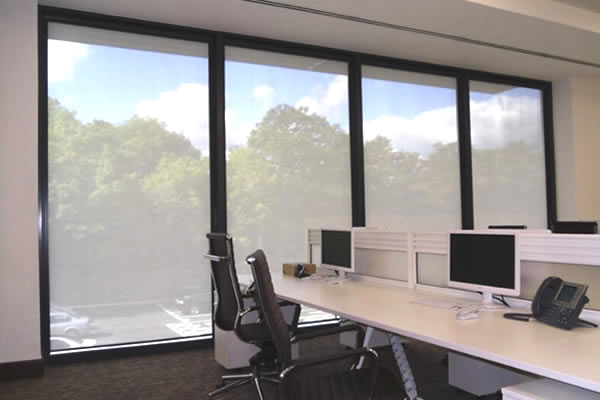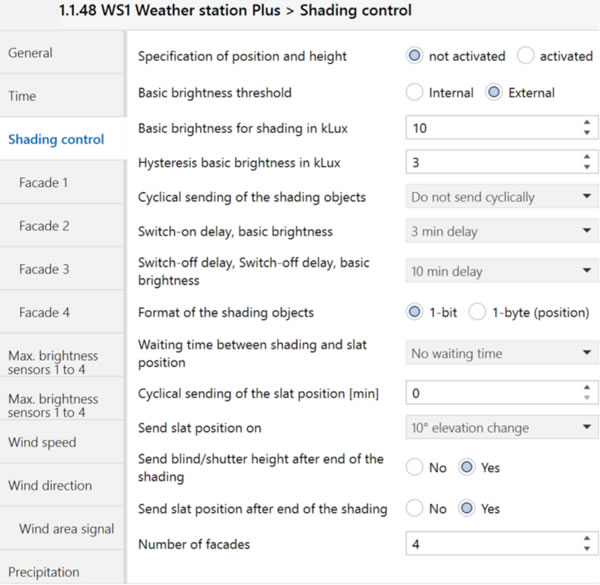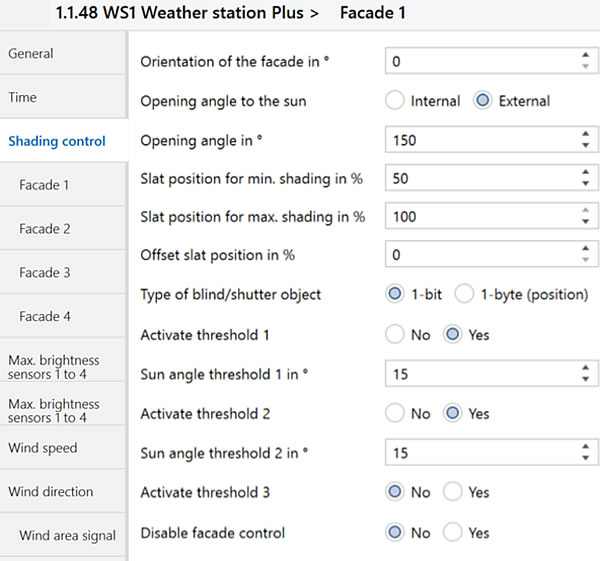 By Mark Warburton, Ivory Egg.
By Mark Warburton, Ivory Egg.
After a recent expansion at Ivory Egg headquarters, we have been making some improvements to the control system to make sure we are showing the full potential of KNX. It’s always great fun to get back on the tools and be reminded of just how functional a KNX system can be – even if finding the time to work on your own, or a demo system, is a constant challenge!
Motorised blinds
One of the recent updates was the installation of motorised blinds, primarily for security at night, but also for shading from glare during the day. Whilst we knew that SMI (Standard Motor Interface) was the simplest way to provide cost-effective, accurate positional control of multiple blinds, finding a UK supplier that would be able to provide these motors seemed a bigger challenge. However, a quick call to Vestamatic, a key supplier of SMI motors and KNX interfaces, and we were speaking to Umbra, a UK-based manufacturer that not only specialises in roller blinds but has a controls-first attitude that ensures it offers the best solution for the customer instead of just focussing on off-the-shelf solutions.

Within a few weeks we had the blinds manufactured, installed and wired to the Vestamatic SMI-KNX interface which allows us to control each blind individually or group them together on each façade. It also has lot of additional features such as feedback on the motor states, scene integration and multiple security functions.
Sun tracking
It’s great to have this function of the building automated as it makes the opening and closing procedure so much easier. The next step is to automate the blinds based on the sun position to prevent glare on computers. This can seem complicated but with so much intelligence in individual KNX devices, it’s more a case of understanding the principles and making sure you have the right product. It would be much better with Venetian blinds, as we could tilt the blinds to allow light to continue to come into the building, but we can still use the roller shutters to track the sun, based on brightness.
We already have a Gira weather station installed (previously featured in my article Making the Most of Weather Stations) so along with the positional control function of the blinds, we have everything we need for sun tracking.
Measurements and settings
There are two key measurements when calculating the position of the sun, namely azimuth and elevation. The azimuth specifies the angle between geographic north and a vertical circle through the centre of the sun. The elevation (sun height) is the angle between the horizon and the centre of the sun from the point of view of the human observer. Thankfully, we don’t need to calculate these, we just need to tell the weather station where it is in the world and what time it is. Or even easier, as most weather stations have an integrated GPS receiver, these will be actually be calculated internally.

The rest of the settings relate to the position of the façade you wish to control and the response times. The exact direction the façade faces has to be calculated either with a compass or using the architect’s plans if they have positioned them geographically. The shading area then has to be set. There are different ways to approach this, with some controllers splitting the area into multiple sectors so you can fine-tune the control around objects. In the case of the Gira, it is just a simple opening angle centred on a perpendicular line to the façade. So, 180° means that control will happen over the entire façade, whereas 1° means that the control will only happen when the sun is directly facing the façade.
Once the decision is made on the area to control, it just a case of setting the brightness threshold that shading control should start from, the time delays between steps (which helps to prevent sudden changes based on cloud cover) and the starting, minimum and maximum positions of the shutter and slats. Of course, there will have to be some fine-tuning of the control, but this advanced functionality is surprisingly easy to implement.

Conclusion
Shading control is one of the key benefits of using a KNX based system. It allows you to reduce solar gain and glare in a building whilst still allowing as much ambient light into the property as possible. If it is considered at the conception of the building, it can also free the architect to design the building for maximum light and views, knowing that the comfort of the occupants and the efficiency of the building will still be to the highest standard. Working closely with a shading manufacturer and controls distributor that understands this, is key, as they can provide the best solution to achieve the most functionality.
Mark Warburton is the Technical Director of Ivory Egg (UK) Ltd, a supplier of leading KNX products and provider of KNX training courses.











